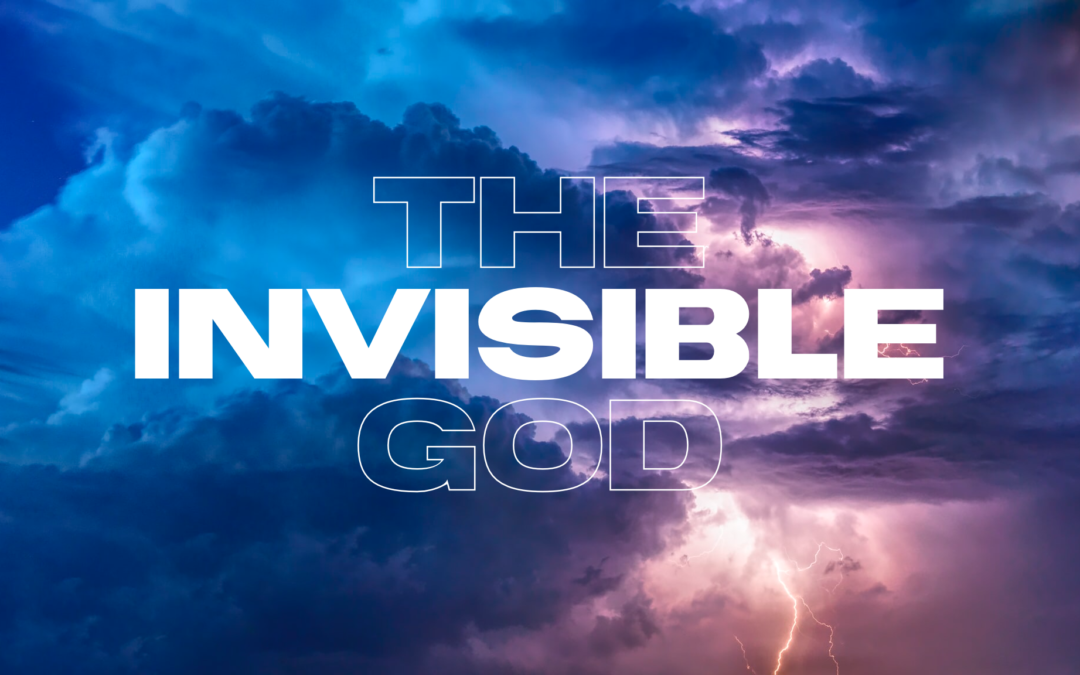“By faith he forsook Egypt, not fearing the wrath of the king: for he endured, as seeing him who is invisible.” (Heb. 11:27)
Moses as mediator of the Old Covenant was one chosen with whom God interacted on a more intimately personal level. God spoke directly to Moses. He met with him one-on-one. And in very particular ways, God allowed Moses to “see” him – in the burning bush that was not consumed (Exod. 3:2), the thunder, lightning, smoke, and trumpet sound when Moses was on the mountain (Exod. 20:18), and in the cloudy pillar that stood at the doorway of the tabernacle once Moses entered (Exod. 33:9). At the same time he did not actually “see” God, for as God told Moses in Exodus 33:20, “no man can see me and live.”
And yet our passage in Hebrews 11 reads that Moses “saw him who was invisible.” Of course, if God did not reveal himself in some fashion, the writer of Hebrews would not have used these words. So how can this seeming contradiction be reconciled? Thomas Wilson rightly said, “God being an invisible Spirit, makes himself seen to his faithful ones and visible (as it were) in his word, sacraments, works, and creatures.”
Simply considered in his divine essence as Spirit, God cannot be seen with physical eyes. And fully considered in his infinite excellency and majesty, God is incomprehensible to the degree that, even with the eyes of his soul, no man can see God to the extent of his fullness (1 Tim. 6:16).
Yet in some respects God may be seen both with corporal and with spiritual eyes. He was seen with corporal eyes in various apparitions and resemblances in Scripture – in a cloud (Exod. 13:21; Lev. 16:2), in brightness (Ezek. 1:26-29), in a human shape (Gen. 18:3), and in a true body (John 14:9; 1 Tim. 3:16).
Further, he can be seen with spiritual eyes in two separate dimensions: 1) Understanding (Eph. 1:18), and 2) Faith (Heb. 11:27). The former (that of understanding) is more common. For everyone – both Christians and heathen alike – may with the eye of understanding see him in nature sufficiently to conceive that there is an eternal being who is the Almighty, most wise, just, and gracious God (Rom. 1:20). The latter (that of seeing with the eye of faith) is specific to the saints, and in that respect is described as “the faith of God’s elect,” (Titus 1:1).
Presently, the Lord is seen in his holy ordinances – his word and sacraments, prayer and praise. Further, in this world the Lord is seen through an experiential knowledge of his grace and favor to believers. This is furthered by an assurance of faith and confidence which, if pursued, can become so clear and evident that one can, as it were, “see” God’s face.
Finally, at the day of judgment all men shall see him in Christ Jesus with their physical sight (2 Cor. 5:10). And for all eternity, the saints in heaven shall continually behold him! (1 John 3:2; 1 Thess. 4:17).
Contemplations:
- Lord, being able to see you in your word, sacraments, and devotional worship and prayer makes me careful to please you, like Enoch who was careful to walk with you (Gen. 5:24; Heb. 11:5).
- Such a sight of you emboldens me against all that man can do and helps me to endure anything (Heb. 11:27). For by seeing you I am assured to have sufficient assistance and seasonable deliverance.
- To see you through the eyes of spiritual understanding and faith encourages and comforts me not only in life, but even in death itself as I consider the case of Stephen (Acts 7:55-56). For I am assured of a blessed resurrection.
- In the world to come, when the saints see you in all your glory, it will fill their souls with all the contentment, joy, and delight that possibly can be (Ps. 16:11 and 17:15). This experience is described as a beatific vision in Jesus – one in which the sweetness, the fullness, the happiness of it no tongue can express and no heart can conceive.
Further References for Hebrews 11:27:
1 Tim. 1:17; Hebrews 11:1; Col. 1:15; 1 Tim. 6:16


